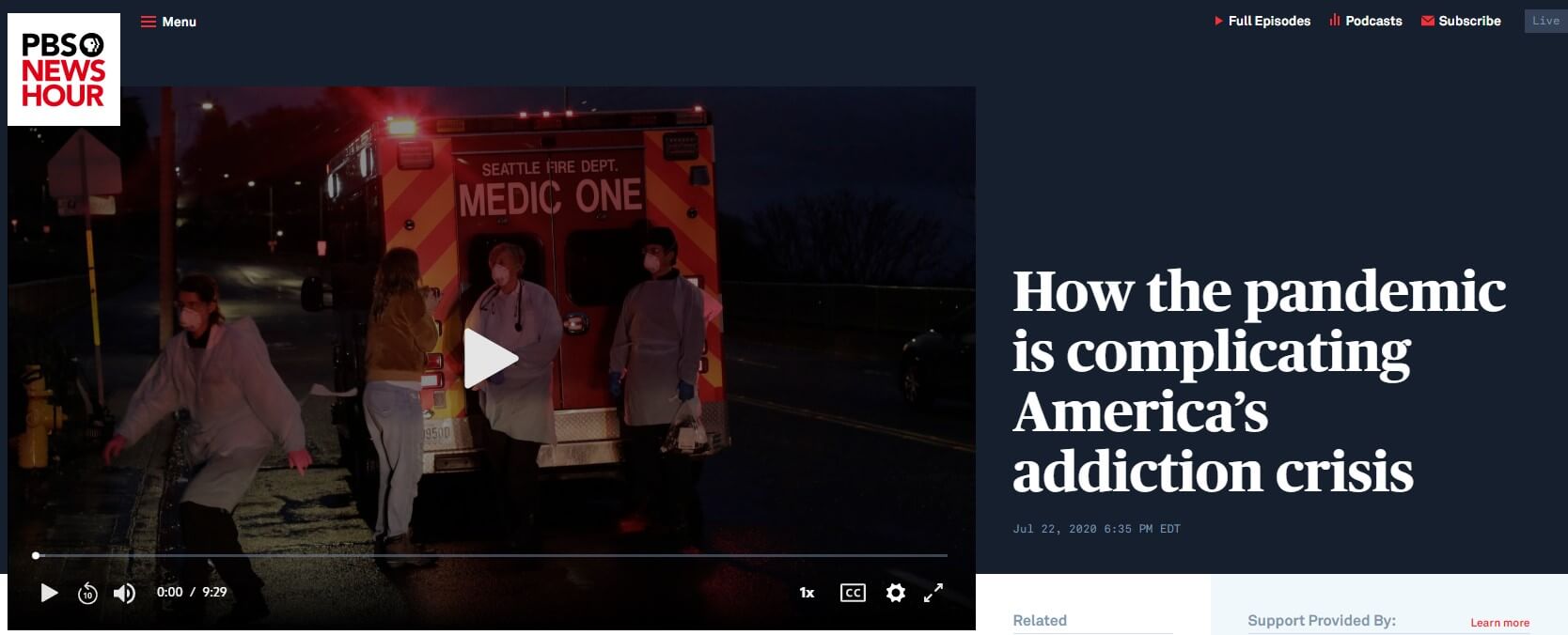Two Epidemics Colliding: Addiction and COVID-19
By: Jennifer Faringer, MS. Ed, CPP-G
This has been an unprecedented year with the sudden introduction of the COVID-19 pandemic, its early and devastating impact on New Yorkers, and the subsequent efforts undertaken that have markedly reduced infection rates and deaths in our state. During this period of social isolation and shutdown, the addiction epidemic did not disappear. Instead, the collision of the pandemic and the opioid epidemic that began to become a global health crisis in the 1990s has significantly set back a decade of progress in combating the opioid epidemic and the devastation it has caused families and communities.
We know that those with a substance use disorder are at higher risk of being both more susceptible to and dying from COVID-19. This is especially true for those with an opioid use disorder (also those with a tobacco use disorder). According to Dr. Nora Volkow, who is the director of the National Institute on Drug Abuse, “Drugs inhibit the ability to fight viral and bacterial infections, disrupting immune function.”
Opioids decrease the effective functioning of the respiratory centers in the brain. Both the impact upon immune function and upon the respiratory centers lead to increased risk of COVID-19 and its many complications. Opioids include not only heroin and fentanyl but also oxycodone, hydrocodone and other prescription medications. This category of drugs not only reduces pain, but in affecting our ability to breathe, makes its combination with COVID-19 potentially lethal.
 In late July, PBS News Hour ran a comprehensive episode entitled “How the Pandemic is Complicating America’s Addiction Crisis” illustrating how both epidemics have become major health concerns. Click here to view this video.
In late July, PBS News Hour ran a comprehensive episode entitled “How the Pandemic is Complicating America’s Addiction Crisis” illustrating how both epidemics have become major health concerns. Click here to view this video.
Our challenge going forward is to take what we’ve learned in creating the real time data and mapping capabilities that New York State has instituted to flatten the curve and apply this sense of urgency and immediacy in response to the addiction epidemic! The time to increase resources and access to early prevention for youth, families and communities is NOW. It is time to continue to increase access to treatment, eliminating any remaining access barriers and increase access to supportive recovery peer services.
There is hope if we are, as a community, committed to responding to the pandemic by practicing social distancing and wearing a mask. There is also hope if we are willing to ensure that those struggling with addiction can receive the support they need, from prevention to treatment to recovery services.
To learn more, to request a presentation, or to download NCADD-RA’s Directories of Services for Prevention, Treatment, Recovery, Medication Assisted Treatment, and access many other addiction support resources, visit NCADD-RA’s website at www.ncadd-ra.org or follow the NCADD-RA on Facebook at https://www.facebook.com/NCADDRA/.